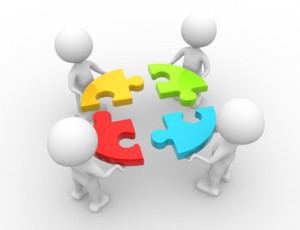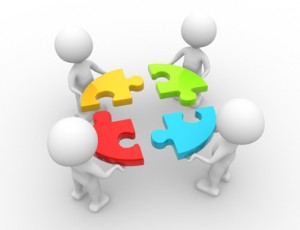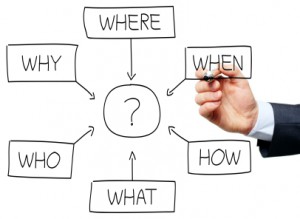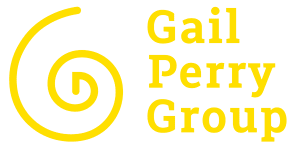Donor-Centered Moves Management: Systematic Cultivation for Your Major Gifts Prospects
If you want to manage your major gifts fundraising program, then use a moves management cultivation system. 
Moves management is a great tool for building those important relationships with top prospects over time.
And we all know that is what will result in the big gift.
Today, guest blogger Claire Axelrad of the award-winning Clairification.com blog joins us to discuss Moves Management.
What’s Moves Management?
It’s a major donor cultivation approach to plan, make and keep track of a targeted number of “moves” or “touches” per year to major gift prospects.
Each “move” is targeted to move your prospect along a relationship continuum – from awareness… to interest… to involvement… to investment — depending upon where they currently are in relationship to your nonprofit.
Receive expert advice. Direct to your inbox. Subscribe
When sufficient “moves” have been made, the culmination is your request for a gift/increased gift.
One person, assigned as the Moves Manager, assures that all moves are coordinated and the solicitation occurs at the appropriate time.
The goal of all this work is getting your major donors to feel:
- I’m loyal to this charity.
- This is my favorite charity.
- I’m a committed donor.
Sounds good, right?
Moves management cultivation is a team contact sport.
You really want to have several people connecting with your donor over the months (or years) leading up to the ask.
WHy? No one individual is right to be matched with every prospect.
Because of course you don’t want donors’ only interaction with your organization to be a hands-off institutional one.
Find out how we can help you achieve your fundraising goals with world-class consulting and custom training.
That’s not the emotional connection we’re talking about and the one that will lead to a successful ask.
People who personify and represent your nonprofit can and should be involved with donors. (Just be sure they are well briefed!)
And simply “connecting” with your donors isn’t enough, either.
Donors need to LOVE you to make a significant commitment to your organization.
But YOU’RE gonna have to get them to that point.
Think about what’s actually going on when a donor says “Yes!” to a major gift solicitation.
They’re actually saying “I love you.”
They’re making an active commitment to you, your organization and your cause.
What gets them to the point where they’re ready to make this commitment?
YOU DO!
Your job is to create a climate for donors to fall in love with your cause.
You’ve got to be pro-active to create this climate.
You can get them there with a board member’s coffee invitation, a tour conducted by a program staffer, and culminating with a face-to-face with the executive director.
In between there will be a number of thoughtfully planned ‘touches’ orchestrated by the development director or major gifts officer.
Everything is done according to a plan.
So how can you implement moves management cultivation?
First you develop a large list of possible ‘high-touch,’ ‘medium-touch’ and ‘low-touch’ cultivation ‘moves’ to incorporate into your major donor-investor prospect’s individualized plan.
You’ll have some standard moves you use again and again.
A move only “counts,” however, if it’s executed according to a donor-centered plan that’s personalized for each donor.
In other words, a mass mailing of holiday cards is not moves management.
Then you draw from this list to develop your tailored plan for each top prospect in your major donor prospect portfolio.
With each move you make, ask yourself:
- How is this bringing me closer to asking for a gift?
- What did I learn that will help me secure a gift?
- Did I find out what motivates my prospect to be philanthropic?
- Did I find out what they love most about my organization?
- What does it make sense to do next?
Caution: Moves management is not a one-size-fits-all approach! It’s custom tailored — for major donors only—who are the top 20% who give you 80-90% of your philanthropy.
It’s not something you do TO the prospect.
And it’s not something you do when the spirit moves you.
It’s a deliberate, focused set of actions that all build on each other to create close relationship, a happy donor, and a lovely generous major gift to your nonprofit.
How systematic do you get with your donor cultivation?
Do YOU use the moves management cultivation system?
Leave a comment and let us know!






Creating a Top 25 list of your major gift prospects (and the major gift level should be based on the size of your organization and past major gift success) and then strategizing out for the next 6-12 months for each donor has proven to be very successful for us. The moves need to either increase their knowledge of your work or develop a deeper bond with the staff (because people give to people they believe in and like). When we were thinking out 18 months, it just became too future oriented and not short term action oriented. In my opinion in smaller shops, all major gifts donors need to be moved to at least a larger annual gift through these touches if it proves not the right time for a major gift ask.
insurance
wow! it’s so good.thanks for sharing it.
What’s a good way to keep the process organized? I worry about dropping the ball with a donor.
Great question! You need a monthly strategy meeting with your team to review your prospect list and where you stand with each key prospect. You need to have that regular review or you will lack organization!
Investing in a basic (or complex) customer relationship management database can also help you and your co-workers track your relationships / moves management. There are many different platforms available ranging in price and complexity. If in doubt, a spreadsheet on a shared drive in your organisation that each member of your philanthropy team has access and editing rights to can also do the trick.
Hi Jake, thanks! And yes to the database! Can’t do it without that important tool!
Hi, I like your Top 25 list that focuses on the short run. YES!
Any tips for regional development officers who may only see a donor once or twice a year?